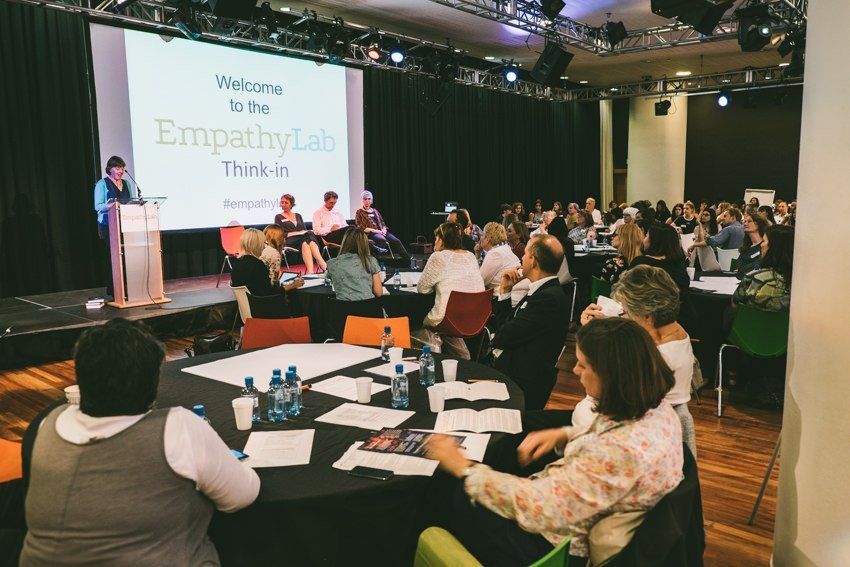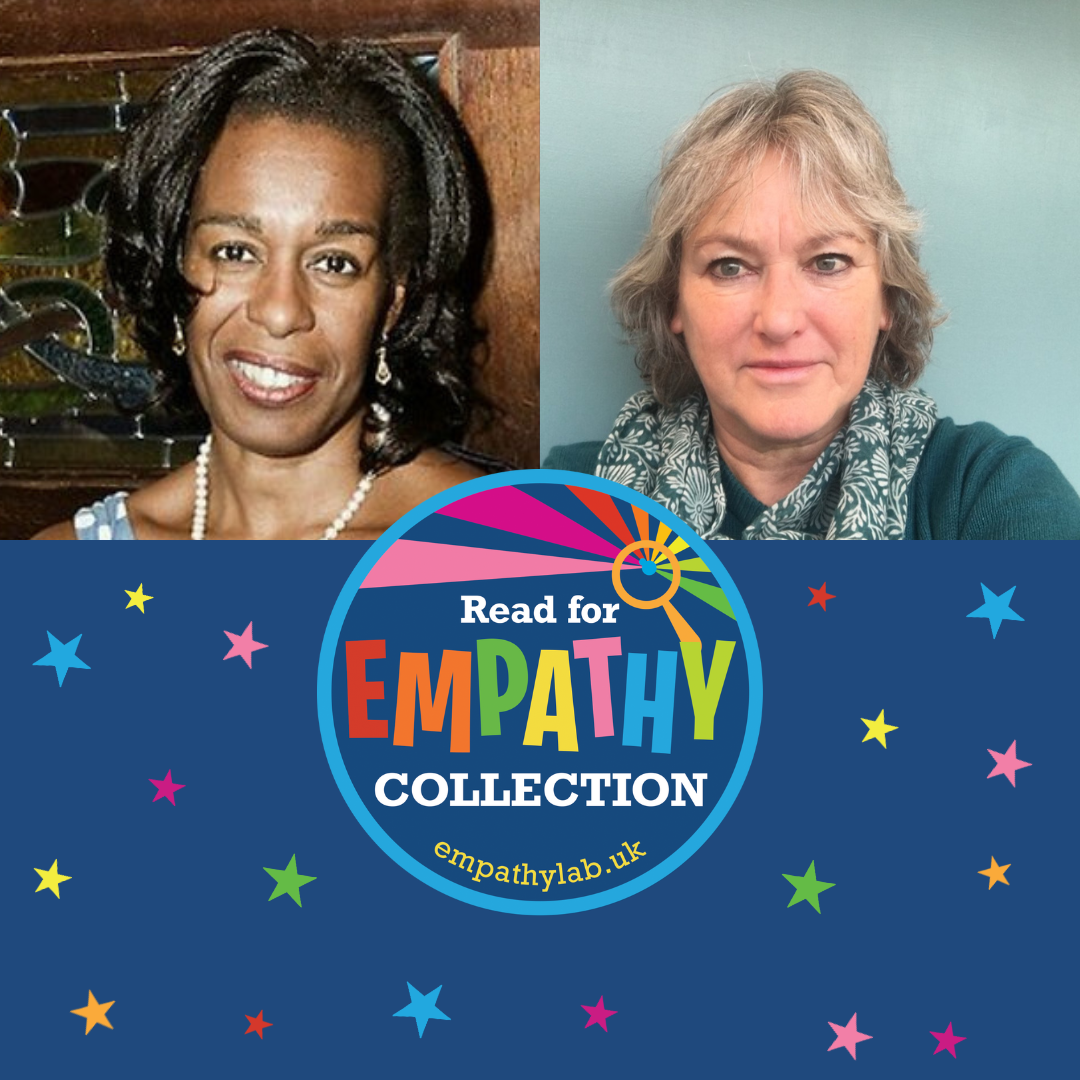THINK-IN THOUGHTS: TERESA CREMIN
- By EmpathyLab
- •
- 31 Jan, 2017
- •

Literature can make a difference. Reading allows young people to gather information about the world and how they fit into it, thus supporting their identity explorations and understanding of themselves and others (e.g. Appleyard,1990; Rothbauer, 2004; Arizpe, Colmer and Martínez-Roldán 2014). Reading literature distinctively excites and develops the imagination which is one of Robin Alexander’s (2010) key aims for the primary curriculum, in order that children can:
…advance beyond present understanding, extend the boundaries of their lives, contemplate worlds possible as well as actual, understand cause and consequence, develop the capacity for empathy, and reflect on and regulate their behaviour . . . [W]e assert the need to emphasise the intrinsic value of exciting children’s imagination. To experience the delights – and pains – of imagining, and of entering into the imaginative world of others, is to become a more rounded person (Alexander, 2010:199)
This statement, as Cliff Hodges (2010) observes, could equally apply to reading literature which, many would argue, is itself a key creative skill and one which can support children’s personal, social, and moral education, and can strengthen, challenge or alter the ways in which they see the world and engage with it (e.g. Landay and Wootton, 2012; Ross et al., 2006). Additionally, recent US research suggests that high quality literary fiction that requires intellectual engagement and creative thought, enables young readers to develop the complex social skill of ‘mind-reading’ in order to understand others’ mental states (Kidd and Castano, 2013).
Such empathy and mindfulness of others is a valuable personal and social asset, and is the developmental focus of EmpathyLab who plan to develop four community programmes across 2015-17. Yet despite the potency of children’s fiction, such as Shaun Tan’s The Arrival, Charlotte Moundlic’s The Scar or the award winning A Monster Calls by Patrick Ness, texts themselves do not necessarily move us beyond deep in-the-moment affective and empathetic engagement. What seems critical for the project work devised is the pedagogical context in which any such multimodal (and multimedia) texts are explored. The presence of others, (peers- artists- authors- teachers- parents and/or siblings), and the ensuing conversation and activities will help make the difference, enabling connections to be made and consequences to be realised. In classrooms and workshops, pedagogy is key to helping guide children’s thoughts and actions beyond the immediate context and to ensuring the development of imaginative innerstanding – of empathy. Understanding the pedagogies which foster this and the longer term impact on young people’s perspectives, compassion and actions is, in my view, at the core of the challenge ahead.
Teresa Cremin is Professor of Education at the Open University.
Find out more about EmpathyLab’s plans and join our network on LinkedIn – we’d love you to be part of the conversation.
Photo credit: Dan Chippendale
References
Appleyard, J. A. (1990) Becoming a reader: the experience of fiction from childhood to adulthood Cambridge: Cambridge University press.
Alexander, R. (2010) (ed) Children, their world and their education: final report and recommendations of the Cambridge Primary Review. London and New York: Routledge
Arizpe, E. Colmer, T. and Martínez-Roldán,C. (2014) Visual Journeys Through Wordless Narratives, London: Bloomsbury Academic.
Cliff–Hodges, G (2010) Rivers of reading: Using critical incident collages to learn about adolescent readers and their readership English in Education Vol.44(3 ) 180-199
Kidd, D. and Castano, E. (2013) Reading literary fiction improves theory of mind Science 342(6156) 377-390.
Landay, E. and Wootton, K. (2012) A Reason to Read: Linking Literacy and the Arts Cambridge MA: Harvard.
Ross, C.S. McKechnie, L. and Rothbauer, P.M. (2006) Reading Matters: What research reveals about reading, libraries and community Westport: Libraries Unlimited.

The collection consists of 65 books for 3-16 year olds, each chosen for its unique contribution in building young people’s empathy.
The primary collection for 3-11 year has 40 books; the secondary collection features 25 books for 12-16 year olds.

I am very fortunate to have been on the Read for Empathy booklist judging panel over the past few years.
I’m also a practising classroom teacher so I would like to consider how the books on the list can influence what happens in a school.
Firstly, along with many other schools, reading aloud is an important part of our school day, every day, almost without fail. All the teachers at my school are aware of the EmpathyLab booklist, and often use it as a basis for choosing their next class read. Knowing that the books touch on important aspects of our children’s lives is key; we all understand how important representation is in stories. These are books that make a difference, that lead to passionate discussions in the classroom and can actually influence children’s behaviour .
The booklists become increasingly valuable. We have a couple of hundred empathy texts at our school – they are there on merit. Staff often refer to previous lists if there as a particular aspect of empathy that they want to include or share with the children.
Our Year 6 Reading Champions often seek out picture books from the list to take in to KS1 and Reception when they read stories, so we already have the next generation educating each other about the importance of empathy. I love the fact they often meet beforehand (they tend to work in twos) to discuss what questions they might want to ask the children once the story has been read. After each booklist is released, they also spend several of their Friday recommendation slots in assembly talking about a couple of the books. We have parents in on our Friday assembly so it’s a great way to share the texts with them and help raise their awareness of our work.
We often use the books as our teaching texts for English, partly because they encourage excellent writing but also because they provide a fantastic opportunity for our pupils to develop their empathy skills. The Wild Robot by Peter Brown, Miraculous Journey of Edward Tulane by Kate DiCamillo, Freedom by Catherine Johnson, Eyes that Kiss in the Corners by Joanna Ho and A Street Dog Named Pup by Gill Lewis are all books that have made in into our English curriculum as a result of being on one of the Read for Empathy booklists. Well, that’s not strictly true - Edward Tulane was there before that as it’s one of my favourite ever books, but you hopefully take my point.
Reflecting on our empathy journey over the past few years, I’ve also found that the more books children read that address empathy, where they can relate to the characters and their choices, the more books they want to read. It’s almost a virtuous circle. Many begin to realise that such books can empower them to think about situations.
For example, as soon as we finished A Street Dog Named Pup last year, several of them immediately wanted to read other books by Gill Lewis. Because empathy is a thread that runs through much of her work ( Gorilla Dawn , Moon Bear , The Closest Thing to Flying and so on). Thanks to EmpathyLab's lists, I was able to point them in the direction of several other books, by her and others.
I think we agree that teaching children about empathy and providing them with opportunities to develop it is one of the most important gifts we can give them as adults. The fact that empathy has gone from being something that schools sort of understood a few years ago to being something that has got an increasingly solid evidence base is crucial.
There’s always been anecdotal evidence that reading stories is important for children and that it can change how they think but now that’s backed up with research. The empathy revolution (and it is a revolution) is only going to pick up more momentum over the next few years as the need for it becomes ever more apparent. Working in schools and in the world of children’s books means that we’re in the front line. There’s nowhere else I’d rather be.
